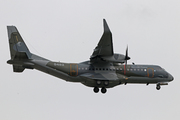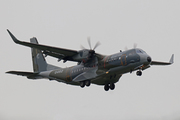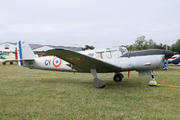Dépêches
Airline ancillary revenue soars to $32.5 billion worldwide in 2011
Dépèche transmise le 19 octobre 2011 par Business Wire
MADRID & SHOREWOOD, Wis.--(BUSINESS WIRE)--Ancillary revenue has become a crucial component in the global airline industry’s profit toolbox. The International Air Transport Association slashed its 2011 industry profit outlook to $4 billion and revealed that carriers will spend $10 billion more on jet fuel this year.1 The $32.5 billion contributed by ancillary revenue has lifted the airline industry from a loss-making position and continues to provide a very effective hedge against runaway fuel bills.
“Outside of the US market and the global LCC sector, airlines tend to choose a model that complies with industry standards rather than a customized approach to the development and deployment of their ancillary services”
Earlier this year, Amadeus and IdeaWorks reported the ancillary revenue disclosed by 47 airlines in 2010. These statistics were applied to a larger list of more than 200 airlines to provide a truly global projection of activity for 2011. The Amadeus Worldwide Estimate of Ancillary Revenue for 2011 is the second year Amadeus and IdeaWorks have undertaken the task of calculating global ancillary revenue activity.
| Amadeus Worldwide Estimate of Ancillary Revenue | ||||||
|
|
2011 Ancillary | 2010 Ancillary |
|
|||
|
Airline Category |
Revenue |
Revenue |
Increase for 2011 |
|||
| US Major Airlines | $12.5 billion | $6.7 billion | 87% | |||
| Low Cost Carriers | $4.8 billion | $3.6 billion | 33% | |||
| Traditional Airlines | $10.9 billion | $8.5 billion | 28% | |||
| Ancillary Revenue Champs | $4.3 billion | $3.8 billion | 13% | |||
| Worldwide Totals | $32.5 billion | $22.6 billion | 43.8% | |||
|
Source: Ancillary revenue statistics applied by IdeaWorks to individual airline revenue results listed in the Worldwide Airline Report in the July 2011 issue of Air Transport World. |
||||||
“As ancillary revenues continue to grow rapidly, we are now seeing increasing interest from full service carriers around the world, which are also starting to implement ancillary services through global distribution systems, such as Amadeus. KLM and Iberia, for instance, have just joined the ranks of carriers implementing the Amadeus Ancillary Services solution for travel agencies. The model is now focusing on services that increase the scope of the product offering and reinforce the brand rather than unbundle the ticket price,” said Holger Taubmann, VP Distribution, Amadeus.
The IdeaWorks analysis reveals natural groupings (or categories) based upon a carrier’s ability to generate ancillary revenue. The “percentage of revenue” results associated with four defined categories were applied to a worldwide list of operating revenue disclosed by 203 airlines.2 The following describes the four categories:
- Ancillary Revenue Champs. These carriers generate the highest activity as a percentage of operating revenue. The average achieved by this group was 19.8%, which is slightly up from 19.4% for 2010. Examples include AirAsia, Aer Lingus, easyJet, Ryanair and Spirit Airlines.
- Major US Airlines. US-based majors generate strong ancillary revenue through a combination of frequent flier revenue and baggage fees. The average for this group was 11.9%, which is a sizable increase above the 2010 rate of 7.2%. Examples include Alaska, American and United.
- Low Cost Carriers. LCCs throughout the world typically rely upon a mix of à la carte fees to generate good levels of ancillary revenue. The average in this group was 6.5% and is above last year’s 5.4%. Examples include AirTran, Blue1, IndiGo, Jazeera Airways, Pegasus and Spring Airlines.
- Traditional Airlines. This category represents a catch-all for the largest number of carriers. Ancillary revenue activity may consist of fees associated with excess or heavy bags and limited partner activity for a frequent flier program. The average here remained at 2.9%. Examples include Air China, Emirates, Finnair, LAN, Qatar Airways and Singapore Airlines.
“Outside of the US market and the global LCC sector, airlines tend to choose a model that complies with industry standards rather than a customized approach to the development and deployment of their ancillary services,” said Julia Sattel, VP Airline IT, Amadeus. “Our philosophy is to balance the productivity and efficiency that industry standards bring with the desire for some airlines to customize the way in which their product is packaged and sold.”
“Whatever the model, there is no doubt that the growth of ancillary sales is here to stay. The Electronic Miscellaneous Document (EMD) standard for the fulfillment of ancillary sales is rapidly gaining momentum. According to IATA, there are now 28 airlines in the world that are EMD capable, 15 of which are using Amadeus’ EMD Server and have issued over 2.5 million EMDs this year alone,” said Sattel.
The US Major Airlines category continues to produce a commanding share of global ancillary revenue: The $12.5 billion result (38% of the global total) represents just seven airlines: Alaska Airlines, American, Continental, Delta, Hawaiian, United, and US Airways. Compare this to the second largest piece of the pie at $10.9 billion (34% of the global total) which is generated by a far larger group of 140 airlines, the Traditional Airline category. As proven by this revenue result, US-based airlines have readily adapted to an à la carte world, but they also benefit from consumers who are keen to get frequent flier miles.
IdeaWorks believes that the majority of ancillary revenue for US major airlines is generated by the sale of frequent flier miles, notably those linked to co-branded credit card activity. This financial activity exceeds $6.5 billion annually in the US alone. Baggage fees for US carriers represent approximately 20% of their ancillary receipts. The remaining revenue is produced by a large array of à la carte and commission-based activities.
Other sources include on-board sales of food, beverages, Wi-Fi, and hotel bookings. In addition, airlines offer an ever-increasing selection of services that add to traveler convenience such as priority security screening, early boarding, and exit row seat assignments.
The ancillary revenue profile outside the US is difficult to define due to carrier-by-carrier differences. The outsized presence of frequent flier program revenue is most obvious in the US. However, major carriers in other countries, such as Australia, Brazil, and Canada, do generate significant revenue from the sale of miles and points to banks, hotels, retailers, and even direct to program members.
Carriers in North America began to emphasize ancillary revenue after the oil price shock of 2008. Not surprisingly, this region leads the world for ancillary revenue production. IdeaWorks estimates the region achieved a stunning 72% increase above the level estimated for 2010. Ancillary revenue rose across the globe and was largely driven by traffic and passenger revenue increases as the industry recovered from the 2009 recession.
| Ancillary Revenue Estimates by World Region | ||||||
|
|
2011 Ancillary | 2010 Ancillary | Increase | |||
|
World Region |
Revenue | Revenue | for 2011 | |||
| North America | $15 billion | $8.7 billion | 72% | |||
| Africa / Middle East | $1.4 billion | $0.9 billion | 52% | |||
| Latin America / Caribbean | $0.8 billion | $0.6 billion | 47% | |||
| Asia / Pacific | $6.3 billion | $4.8 billion | 30% | |||
| Europe | $9 billion | $7.6 billion | 18.7% | |||
|
Source: Ancillary revenue statistics applied by IdeaWorks to individual airline revenue results listed in the Worldwide Airline Report in the July 2011 issue of Air Transport World. |
||||||
IdeaWorks believes that 48% of the $9.9 billion worldwide increase can be attributed to the higher overall level of revenue and passenger activity. Simply stated, an increase of the base generates a larger calculated result. The remaining 52% is attributed to carriers becoming more focused on ancillary revenue through better financial disclosure, stronger merchandising efforts, and adding more à la carte services for sale.
Savvy airline managers have learned ancillary revenue should not rely upon forced choices, but rather allow consumers to tailor travel according to their budget. Consumers who are treated fairly and receive good value will undoubtedly provide airlines with another good year of ancillary revenue growth for 2012.
See infographic and blog post on how ancillaries are changing the economic landscape for airlines: http://www.amadeus.com/blog/19/10/ancillary-revenue-coming-soon-around-the-world
Disclosure: IdeaWorks makes every effort to ensure the quality of the information in this report. Before relying on the information, readers should obtain any appropriate professional advice relevant to their particular circumstances. IdeaWorks and Amadeus cannot guarantee, and assume no legal liability or responsibility for the accuracy, currency or completeness of the information. Figures for 2011 have been expressed in US dollars only; year over year comparisons have not been included for the euro due to significant currency fluctuations. Revenue expressed in billions of dollars was rounded to the nearest $100 million.
Notes to the editors
About Amadeus
Amadeus is a leading transaction processor and provider of advanced technology solutions for the global travel and tourism industry.
Customer groups include travel providers (e.g. airlines, hotels, rail, ferries, etc.), travel sellers (travel agencies and websites), and travel buyers (corporations and individual travellers).
The group operates a transaction-based business model and processed 850 million billable travel transactions in 2010.
Amadeus has central sites in Madrid (corporate headquarters), Nice (development) and Erding (operations – data processing centre) and regional offices in Miami, Buenos Aires, Bangkok and Dubai. At a market level, Amadeus maintains customer operations through 73 local Amadeus Commercial Organisations covering 195 countries.
Amadeus is listed on the Madrid, Barcelona, Bilbao and Valencia stock exchanges and trades under the symbol “AMS.MC”. For the year ended 31 December 2010, the company reported revenues of EUR 2,683 million and EBITDA of EUR 1,015 million. The Amadeus group employs around 10,000 employees worldwide, with 123 nationalities represented at the central offices.
To find out more about Amadeus please go to www.amadeus.com.
To visit the Amadeus Investor Relations centre please go to www.investors.amadeus.com.
About IdeaWorks
IdeaWorks was founded in 1996 as a consulting organization building brands through innovation in product, partnership and marketing, and building profits through financial improvement and restructuring. Its international client list includes the hotel, airline, marine, railroad, consumer products and health care sectors. IdeaWorks specializes in ancillary revenue improvement, brand development, customer research, competitive analysis, partner-marketing strategies, elite customer recognition, and loyalty programs. Learn more at IdeaWorksCompany.com.
1 “Airline Industry 2011 Profit Outlook Slashed to $4 Billion” IATA press release dated June 6, 2011.
2 Operating revenue results were drawn from the World Airline Report published in the July 2011 issue of Air Transport World. Additional sources were used, such as disclosures made at airline investor relations websites, to complete the list of 203 airlines. Adjustments were made to prevent duplicate reporting associated with regional affiliates. Pure cargo carriers, such as FedEx and UPS Airlines, were not included.
Photos/Multimedia Gallery Available: http://www.businesswire.com/cgi-bin/mmg.cgi?eid=50035195&lang=en
- 20:57 Volotea inaugure quatre nouvelles routes au départ de Lille
- 19:13 Le Racer d'Airbus Helicopters a effectué son premier vol
- 18:51 AFI KLM E&M conclut un accord de support d'équipements avec Air Tanzania
- 18:23 FlyBy signe une commande avec Tecnam
- 17:45 Air Tahiti Nui simplifie les voyages depuis les États-Unis en rejoignant le programme TSA PreCheck
- 03/05JO 2024 : la DGAC diffuse les suppléments d'information aéronautique permanente (SUP AIP)
- 03/05 Le Temps des Hélices 2024 : des paramoteurs en ouverture
- 30/04 Le Royaume-Uni commande des Airbus H145 supplémentaires
- 30/04 Vueling présente une livrée spéciale dédiée au FC Barcelone féminin
- 30/04 L’EASA a délivré le "Permis de voler" à l'INTEGRAL E
- 30/04 Icelandair célèbre les 40 ans de l'expérience Saga Premium
- 30/04 Finesse Max livre le 100e Velis Electro
- 28/0451e fête aérienne - Le Temps des hélices
- 28/04 Friedrichshafen 2024 : le salon a attiré plus de 31 000 visiteurs
- 28/04 Friedrichshafen 2024 : La fédération norvégienne de sports aériens commande un INTEGRAL E
- 28/04 Friedrichshafen 2024 : exposition d'un Global 6000 de l'armée de l'air allemande (photos)
- 28/04 Friedrichshafen 2024 : forte présence de la société chinoise, Rhyxeon General Aircraft Co
- 28/04 Friedrichshafen 2024 : le Corsair e-motion, un ULM électrique
- 28/04 Friedrichshafen 2024 :AURA AERO et Societe Generale Equipment Finance annoncent leur coopération
- 28/04 Friedrichshafen 2024 : Tecnam a lancé le P2006T NG







